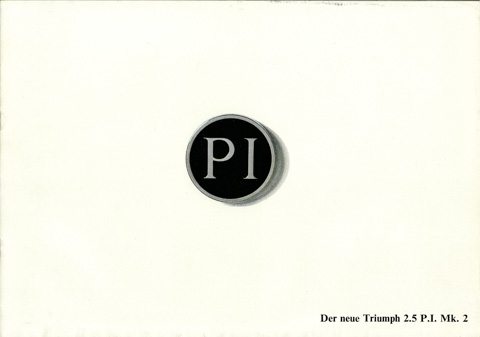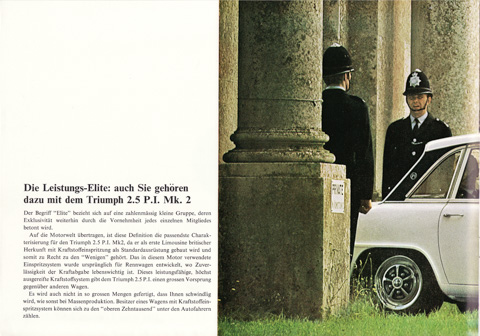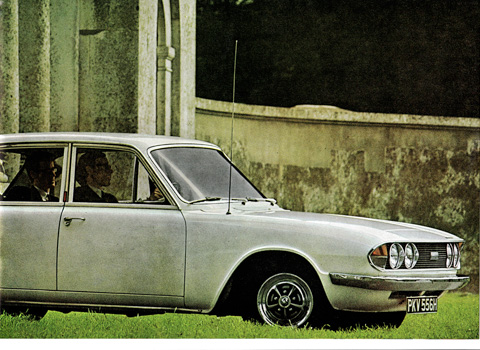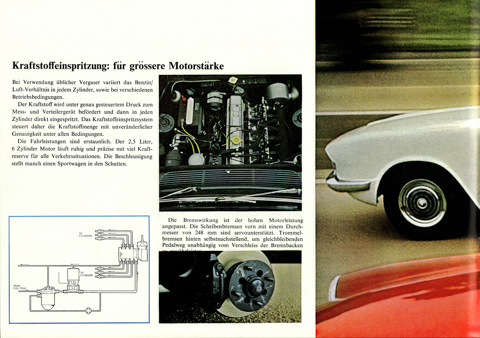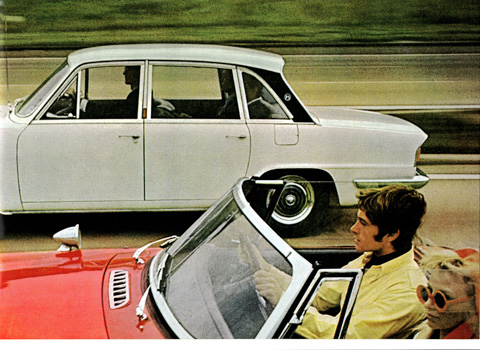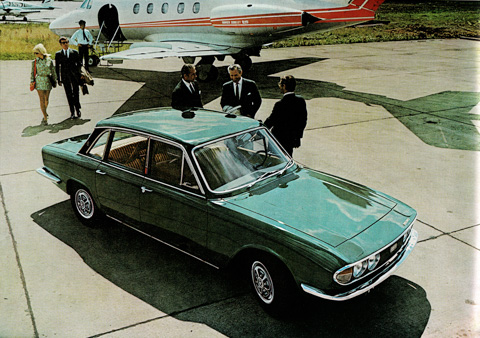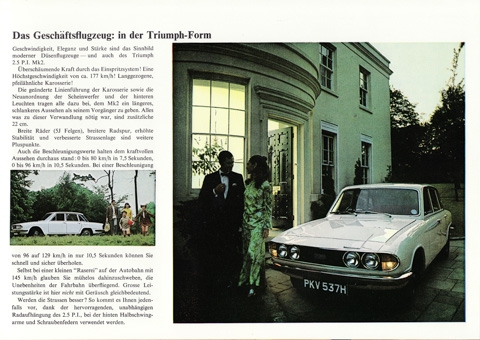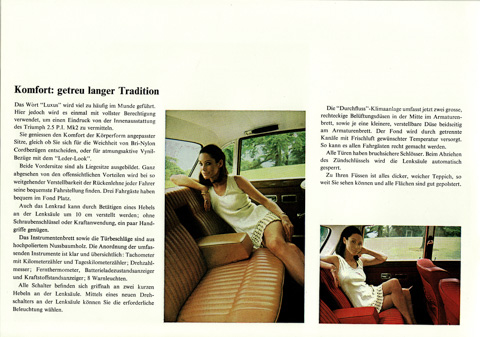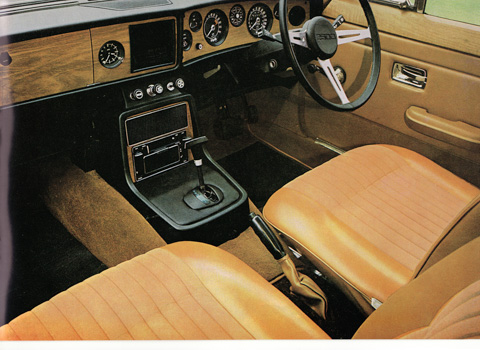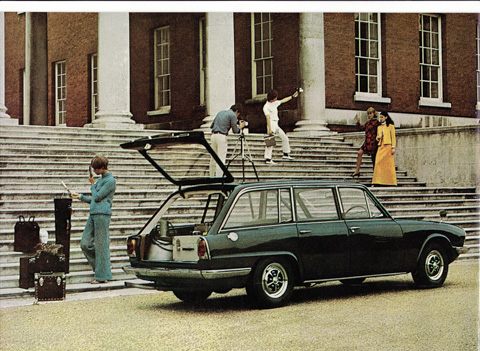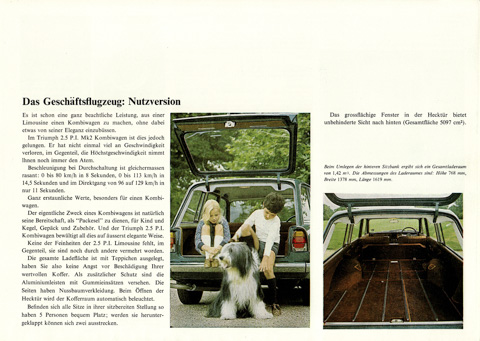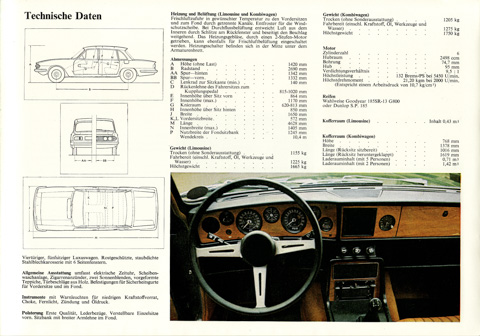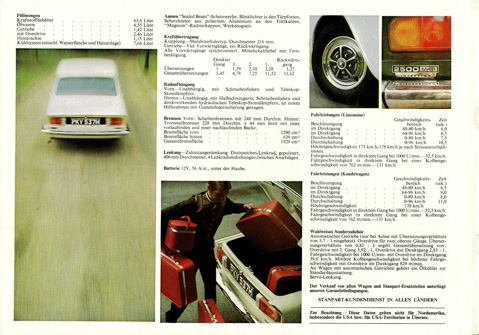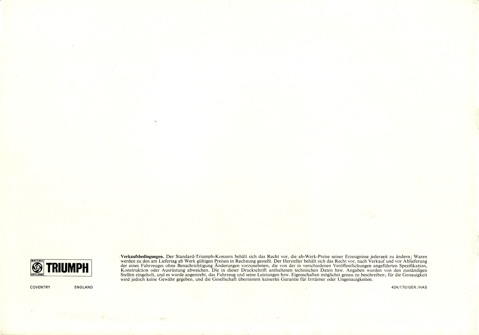Triumph 2.5 P.I MK. 2
In October 1969, the Mk 2 range was launched, again styled by Michelotti, updating the car for the 1970s. The front of the car now followed the lines of the then-upcoming Triumph Stag grand tourer. There were entry-level 2000 models, which were the most plentiful, but the remainder of the range consisted of 2500, 2500 TC and 2500 PI models. Apart from the PI (petrol injection) models, all Triumph 2000 and 2500s had twin Stromberg or SU carburettors, the "TC" prefix on some models can seem misleading in this respect as it stood for a higher equipment level. In June 1975 the 2500S model, with 14 inch (356 mm) wheels and anti-roll bar, was added: it replaced the 2.5PI which had quietly disappeared from the show rooms two months earlier. This Marked the end of fuel injected engines for the car, but improved acceleration was claimed for the twin carburettor 2500S and its slightly less expensive 2500TC sibling. These new versions featured an extensive list of other, mostly minor, improvements, of which the most significant were probably those affecting the ride and handling: these resulted from suspension changes including an anti-roll bar. The Estate in the Mk 2 version was 5 inches (125 mm) shorter than the Mk 2 Saloon, because the rear bodywork of the car was carried over unchanged from the Mk 1 version. The Mk 2, the last big Triumph car, ceased production in 1977, supplanted by British Leyland's corporate executive car, the Rover SD1: Six-cylinder 2300 and 2600 versions of the new Rover would nonetheless be powered by engines derived from the Triumph 2000. The last production car, a 2500S estate (BOL87V) is kept at the Heritage Motor Centre.. More info can be found at Wikipedia
